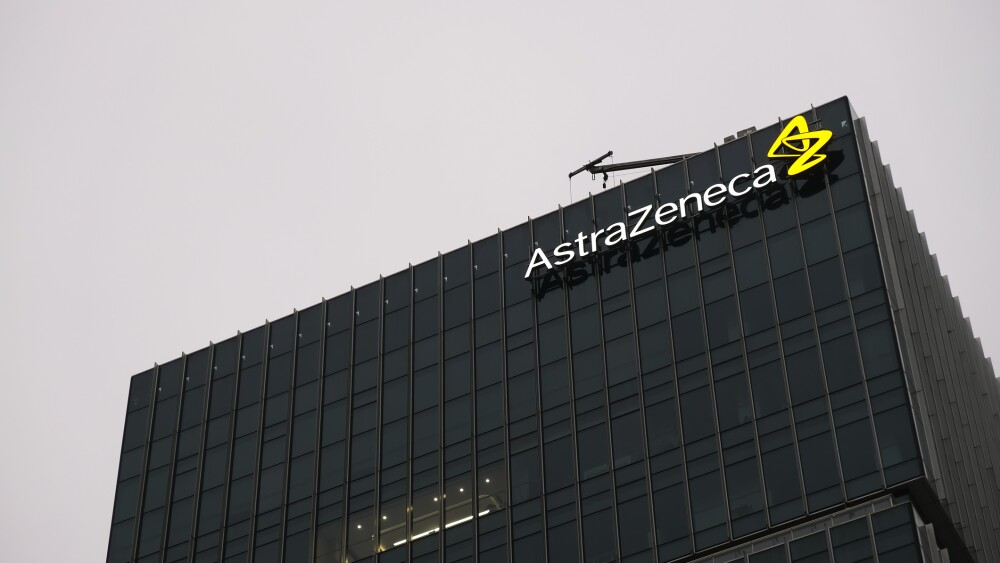Primary Gastric Lymphoma Market Outlook 2025-2035:
The 7 major primary gastric lymphoma market reached a value of USD 2.2 Billion in 2024. Looking forward, IMARC Group expects the 7MM to reach USD 9.3 Billion by 2035, exhibiting a growth rate (CAGR) of 14.15% during 2025-2035. The non-invasive and minimally invasive treatment options, including endoscopic therapy, targeted drug therapies, and immunotherapy, are the major drivers of growth for the Primary Gastric Lymphoma market. Advanced treatment options effectively treat the condition and also reduce the necessity for deep surgeries and long periods of recovery. Targeted therapies, including monoclonal antibodies and small molecule inhibitors, target cancer cells precisely without affecting the healthy tissue, thus providing better treatment results and quality of life for the patient. A long-term benefit with immunotherapy has been improvement in the level of immune function to fight cells with lymphomas for long, causing remission sometimes. Such innovative treatments are becoming attractive options for patients and healthcare providers alike, due to their efficiency, fewer side effects, and better long-term outcomes.
Advances in Early Detection and Diagnostic Technologies: Driving the Primary Gastric Lymphoma Market
Modern diagnostic and therapeutic technologies are revolutionizing the Primary Gastric Lymphoma market. These are enabling better management for patients and ultimately improving outcomes. Advanced imaging such as endoscopic ultrasound (EUS), PET-CT, and MRI gives an accurate, precise visualization of gastric lymphomas, which ensures accurate assessment for proper treatment. These developments have been complemented by molecular diagnostics, such as PCR and NGS, which enable the detection of genetic mutation and molecular markers along with lymphomas to guide personalized treatment strategies. With AI incorporated in diagnostic platforms, there is enhanced accuracy through the automation of tumor recognition, disease progression prediction, and optimization in making treatment decisions. Non-invasive treatment, including drug-targeted therapy and immunotherapy, have also been discovered as emerging solutions. This is one area that does not cause the adverse effects that come with traditional chemotherapy. Further, health monitoring devices allow real-time monitoring of vital signs and responses to treatments, making for timely interventions where necessary. Telemedicine platforms further contribute to bridging the gap for access to specialized oncology care, especially in remote or underserved areas, allowing remote consultations, monitoring, and treatment recommendations. All this culminates to an outcome of better accuracy in diagnosis, early start in treatment, and even long-term benefits in results for the patient who has a Primary Gastric Lymphoma diagnosis.
Request a PDF Sample Report: https://www.imarcgroup.com/primary-gastric-lymphoma-market/requestsample
Development of Novel Therapies and Pharmacological Treatments: Contributing to Market Expansion
The Primary Gastric Lymphoma market is expanding with the introduction of novel therapies combined with advanced pharmacological treatments. New targeted agents and immunotherapies are being developed to address resistant lymphoma cells and other underlying factors, becoming central to disease management. They have a greater efficacy level, fewer side effects, and improved patient outcomes that result in greater patient satisfaction. Research in biological drugs is rapidly advancing to treat moderate to severe cases of Primary Gastric Lymphoma, particularly in patients with chronic inflammatory conditions. Monoclonal antibodies that focus on pro-inflammatory cytokines, such as IL-6 and TNF-α, are also being used in modulating immune responses and, thus, control the disease’s progression. The advancement of drug delivery systems, such as liposomal formulations, nanoparticles, and implantable drug carriers, enables localized delivery of therapeutics, which allows for the maintenance of high concentrations at the site of action while reducing systemic exposure and adverse effects. Adjunct therapies aimed at restoring immune homeostasis are also under development, which can potentially improve treatment outcomes, including immunomodulators and microbiome-focused approaches. Combination therapies employing targeted agents, immunotherapies, and anti-inflammatory interventions are promising alternatives to treat complex pathophysiology in Primary Gastric Lymphoma. Non-invasive therapeutic solutions using sustained-release forms and novel drug delivery technologies are gaining popularity for practicality and patient-centric approach to treatment. Innovation is changing market dynamics, facilitating better therapeutic maneuvers and long-term patient care approaches.
Buy Full Report: https://www.imarcgroup.com/checkout?id=11398&method=809
Regional Analysis:
The major markets for Primary Gastric Lymphoma are the United States, Germany, France, the United Kingdom, Italy, Spain, and Japan. According to projections by IMARC, the United States holds the largest pool of patients with Primary Gastric Lymphoma and at the same time represents the largest market for the treatment of the disease. Novel treatments have recently emerged for Primary Gastric Lymphoma, including advanced immunotherapies, targeted monoclonal antibodies, and small molecule inhibitors, which offer more precise therapeutic interventions. These innovations address the underlying genetic mutations, abnormal immune responses, and chronic inflammation associated with the disease, significantly improving treatment outcomes and reducing relapse rates. Emerging treatment modalities are also being designed to minimize off-target effects and optimize patient safety.
Early detection with more precision regarding the cause and development of Primary Gastric Lymphoma is also being achieved nowadays through diagnostic technologies and approaches advanced recently. Such subtyping, using high-resolution imaging, molecular diagnostics, next-generation sequencing (NGS), allows for characterizing diseases very accurately. Clinicians also ensure accurate monitoring for the disease progress using analytics made by AI algorithms. Timely intervention occurs here with the least number of side effects. Other key factors driving the growth of the Primary Gastric Lymphoma market include regulatory approvals, rising investment in research and development, and increasing collaboration among pharmaceutical companies, diagnostic technology providers, and research institutions. AI-powered diagnostic solutions and telemedicine platforms are enhancing access to care in remote and underserved regions, democratizing state-of-the-art treatments. With advanced therapies and diagnostic solutions, regions such as North America and Europe remain leaders in innovation, propelling the global Primary Gastric Lymphoma market toward sustained growth and improved patient outcomes.
Key information covered in the report.
Base Year: 2024
Historical Period: 2019-2024
Market Forecast: 2025-2035
Countries Covered
- United States
- Germany
- France
- United Kingdom
- Italy
- Spain
- Japan
Analysis Covered Across Each Country
- Historical, current, and future epidemiology scenario
- Historical, current, and future performance of the Primary Gastric Lymphoma market
- Historical, current, and future performance of various therapeutic categories in the market
- Sales of various drugs across the Primary Gastric Lymphoma market
- Reimbursement scenario in the market
- In-market and pipeline drugs
Competitive Landscape:
This report offers a comprehensive analysis of current Primary Gastric Lymphoma marketed drugs and late-stage pipeline drugs.
In-Market Drugs
- Drug Overview
- Mechanism of Action
- Regulatory Status
- Clinical Trial Results
- Drug Uptake and Market Performance
Late-Stage Pipeline Drugs
- Drug Overview
- Mechanism of Action
- Regulatory Status
- Clinical Trial Results
- Drug Uptake and Market Performance
Ask Our Expert & Browse Full Report with TOC: https://www.imarcgroup.com/primary-gastric-lymphoma-market/toc
IMARC Group Offer Other Reports:
Schizoaffective Disorder Market: The 7 major schizoaffective disorder market are expected to exhibit a CAGR of 2.21% during 2024-2034.
Familial Adenomatous Polyposis Market: The 7 major familial adenomatous polyposis markets are expected to exhibit a CAGR of 4.23% during 2024-2034.
Solid Tumors Market: The 7 major solid tumors markets reached a value of US$ 170.3 Billion in 2023. Looking forward, IMARC Group expects the 7MM to reach US$ 375.4 Billion by 2034, exhibiting a growth rate (CAGR) of 7.45% during 2024-2034.
Germ Cell Tumor Market: The 7 major germ cell tumor markets reached a value of US$ 1.5 Billion in 2023. Looking forward, IMARC Group expects the 7MM to reach US$ 3.7 Billion by 2034, exhibiting a growth rate (CAGR) of 8.91% during 2024-2034.
Gastrointestinal Stromal Tumor Market: The 7 major gastrointestinal stromal tumor markets reached a value of US$ 493.6 Million in 2023. Looking forward, IMARC Group expects the 7MM to reach US$ 810.2 Million by 2034, exhibiting a growth rate (CAGR) of 4.61% during 2024-2034.
Congenital Adrenal Hyperplasia Market: The 7 major congenital adrenal hyperplasia markets reached a value of US$ 23.7 Million in 2023. Looking forward, IMARC Group expects the 7MM to reach US$ 44.9 Million by 2034, exhibiting a growth rate (CAGR) of 5.98% during 2024-2034.
Contact US
IMARC Group
134 N 4th St. Brooklyn, NY 11249, USA
Email: Sales@imarcgroup.com
Tel No:(D) +91 120 433 0800
Phone Number: - +1 631 791 1145, +91-120-433-0800





